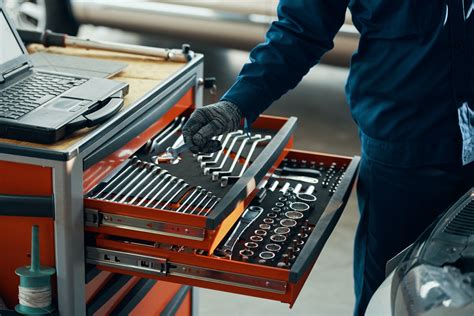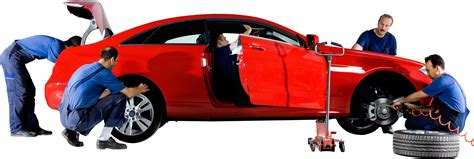
Nine car models, primarily from the 2000s and early 2010s, have landed on a mechanic’s “no-go” list due to frequent mechanical issues, high repair costs, and overall unreliability, potentially leading to significant financial burdens for their owners.
A veteran mechanic, known as Scotty Kilmer, has identified specific vehicles that he advises consumers to avoid, citing recurring problems that can drain wallets and cause considerable frustration. These cars, according to Kilmer, often suffer from issues ranging from transmission failures to oil consumption problems, making them less desirable in the long run despite potentially lower initial purchase prices. The vehicles on this list include models from BMW, Cadillac, Chrysler, and Nissan, among others, each plagued by specific and well-documented issues.
Cars to Avoid and Their Reported Issues
Kilmer’s list comprises the following vehicles, each cited for specific reasons:
-
BMW 745i (2002-2008): The BMW 745i, particularly models from the early to mid-2000s, is flagged for its complex and problematic electrical systems and air suspension. These systems are prone to failure and can lead to exorbitant repair bills. Kilmer emphasizes that “German cars, especially older ones, can be a nightmare” due to their over-engineering and costly parts. The iDrive system, intended to simplify vehicle controls, is also a common source of complaints. The air suspension system is another frequent failure point, often requiring expensive replacements.
-
Cadillac Escalade (2002-2006): The Cadillac Escalade from the early to mid-2000s is noted for its transmission issues and excessive oil consumption. These problems can manifest early in the vehicle’s life, leading to costly repairs and decreased reliability. The Escalade’s luxury features also tend to break down over time, adding to the maintenance burden. Additionally, the vehicle’s large size and weight contribute to increased wear and tear on components like brakes and suspension.
-
Chrysler Sebring (2007-2010): The Chrysler Sebring, especially models from the late 2000s, is widely regarded as one of the least reliable vehicles of its time. Its issues range from engine and transmission problems to electrical faults and poor build quality. Kilmer notes that “some cars are just lemons from the start,” and the Sebring fits this description due to its numerous and widespread problems. The convertible top mechanism, if equipped, is also a frequent source of trouble.
-
Nissan Altima (2002-2007): The Nissan Altima from the early to mid-2000s is cited for its transmission issues, particularly with the continuously variable transmission (CVT) models. These transmissions are known for premature failure and expensive replacements. Additionally, the Altima can suffer from rust problems, especially in areas with harsh winter weather. Engine issues, such as timing chain problems, are also not uncommon.
-
Nissan Sentra (2007-2012): Similar to the Altima, the Nissan Sentra from the late 2000s and early 2010s is flagged for its CVT transmission problems. These transmissions are prone to failure and can be costly to repair or replace. The Sentra’s fuel economy, while initially attractive, can diminish significantly as the transmission wears out. Additionally, the car’s interior quality is often criticized for being subpar and prone to wear and tear.
-
Ford Explorer (2002-2005): The Ford Explorer from the early to mid-2000s is known for its transmission issues, particularly with the 5R55S transmission. These transmissions are prone to failure and can lead to expensive repairs. The Explorer also suffers from rust problems, especially in areas with harsh winter weather. Additionally, the vehicle’s suspension components can wear out quickly, leading to a rough ride and increased maintenance costs.
-
Chevrolet Trailblazer (2002-2009): The Chevrolet Trailblazer from the early to late 2000s is noted for its issues with the four-wheel-drive system, engine problems, and electrical faults. The four-wheel-drive system can be prone to failure, especially in models that are frequently used off-road. Engine issues, such as oil consumption and coolant leaks, are also not uncommon. Electrical faults can range from minor inconveniences to major problems that affect the vehicle’s drivability.
-
Volkswagen Beetle (2000’s): The new generation Volkswagen Beetle of the 2000s is cited for its engine problems, particularly with the 2.0-liter engine. These engines are known for oil sludge buildup, which can lead to engine failure. The Beetle’s electrical system is also prone to faults, and the car’s interior quality is often criticized for being subpar. Additionally, the convertible top mechanism, if equipped, can be a source of trouble.
-
Mini Cooper (2000’s): The Mini Cooper of the 2000s is flagged for its engine problems, particularly with the timing chain. The timing chain is prone to stretching and breaking, which can lead to catastrophic engine damage. The Mini Cooper’s electrical system is also known for being problematic, and the car’s suspension components can wear out quickly. Additionally, the vehicle’s small size can make it less practical for some buyers.
The Rationale Behind the “No-Go” List
Kilmer’s recommendations stem from years of experience working on various makes and models. He asserts that certain vehicles are consistently problematic, leading to a cycle of repairs and expenses that outweigh their potential value. He advises potential buyers to research common problems associated with specific models before making a purchase. Kilmer stresses that preventative maintenance can mitigate some issues, but inherent design flaws and poor manufacturing quality can make certain cars inherently unreliable.
The mechanic uses his platform to educate consumers about the potential pitfalls of purchasing certain used vehicles. He emphasizes that while a car may seem like a good deal initially, the long-term costs of repairs and maintenance can quickly add up, making it a poor investment. He encourages buyers to consider the total cost of ownership, including potential repair bills, when evaluating a used vehicle.
Importance of Vehicle History and Inspection
Before purchasing any used vehicle, it is crucial to obtain a vehicle history report and have the car inspected by a qualified mechanic. A vehicle history report can reveal potential problems, such as accidents, title issues, and odometer discrepancies. A pre-purchase inspection can identify mechanical issues that may not be apparent during a test drive.
Kilmer advises buyers to “always get a pre-purchase inspection” to avoid surprises down the road. He notes that a good mechanic can identify potential problems and provide an estimate of repair costs. This information can help buyers make an informed decision and negotiate a fair price.
Alternative Recommendations
While Kilmer identifies specific vehicles to avoid, he also offers recommendations for reliable alternatives. He often suggests models from Toyota and Honda, citing their reputation for reliability and longevity. He also encourages buyers to consider newer vehicles with updated designs and improved manufacturing quality.
Kilmer emphasizes that “reliability is key” when choosing a car. He advises buyers to prioritize vehicles with a proven track record of reliability and low maintenance costs. He also suggests reading online reviews and consulting with other car owners to get a sense of a vehicle’s long-term reliability.
The Impact of Maintenance and Driving Habits
While some vehicles are inherently more reliable than others, maintenance and driving habits can also significantly impact a car’s longevity. Regular maintenance, such as oil changes, tire rotations, and brake inspections, can help prevent major problems and extend the life of the vehicle. Aggressive driving habits, such as speeding and hard braking, can accelerate wear and tear on components like brakes, tires, and suspension.
Kilmer advises drivers to “take care of your car” to maximize its lifespan. He recommends following the manufacturer’s recommended maintenance schedule and addressing any problems promptly. He also suggests driving defensively and avoiding aggressive driving habits.
Conclusion
Choosing a reliable vehicle is essential for avoiding costly repairs and ensuring a positive ownership experience. By researching common problems, obtaining a vehicle history report, and having the car inspected by a qualified mechanic, buyers can make an informed decision and avoid potential pitfalls. While Kilmer’s “no-go” list provides valuable insights, it is essential to consider individual circumstances and conduct thorough research before making a purchase. Ultimately, prioritizing reliability and maintenance can lead to a more enjoyable and cost-effective car ownership experience.
Frequently Asked Questions (FAQ)
-
Why are these specific cars on the “no-go” list?
These cars are on the list due to frequently reported mechanical issues, high repair costs, and overall unreliability. Common problems include transmission failures, excessive oil consumption, electrical issues, and poor build quality. As Kilmer stated about older German cars, “German cars, especially older ones, can be a nightmare” due to their complexity and costly parts, exemplifying the issues some of these vehicles face. The issues are not isolated incidents but rather recurring problems reported by many owners and observed by mechanics, making these models less desirable in the long run.
-
Is it possible to find a reliable version of these models if they are well-maintained?
While meticulous maintenance can mitigate some issues, inherent design flaws and manufacturing quality can make certain cars inherently unreliable regardless of care. A well-maintained vehicle from this list might experience fewer problems than a neglected one, but the risk of encountering the common issues remains higher compared to more reliable models. As the mechanic suggests, it’s crucial to consider the total cost of ownership, including potential repair bills, when evaluating a used vehicle.
-
What are some alternative car models that are known for their reliability?
Toyota and Honda models are frequently cited for their reliability and longevity. These brands have a reputation for producing vehicles with fewer mechanical problems and lower maintenance costs. Newer vehicles with updated designs and improved manufacturing quality are also generally more reliable than older models. Buyers should prioritize vehicles with a proven track record of reliability and low maintenance costs.
-
How important is a pre-purchase inspection when buying a used car?
A pre-purchase inspection by a qualified mechanic is crucial. The mechanic can identify potential problems that may not be apparent during a test drive and provide an estimate of repair costs. This information helps buyers make an informed decision and negotiate a fair price. As Kilmer advises, “always get a pre-purchase inspection” to avoid surprises down the road. A good inspection can reveal hidden issues and save buyers from costly repairs.
-
What can I do to extend the life of my car, regardless of the make and model?
Regular maintenance, such as oil changes, tire rotations, and brake inspections, is essential for preventing major problems and extending the life of the vehicle. Following the manufacturer’s recommended maintenance schedule and addressing any problems promptly can help keep the car running smoothly. Driving habits also play a significant role. Avoiding aggressive driving, such as speeding and hard braking, can reduce wear and tear on components. Taking care of your car and driving defensively can maximize its lifespan.
Expanded Analysis and Context
The selection criteria for vehicles ending up on a mechanic’s “no-go” list typically involves a confluence of factors that extend beyond isolated incidents of mechanical failure. These factors often include the frequency and severity of common issues, the cost of repairs, the availability of parts, and the overall design and engineering of the vehicle. In Scotty Kilmer’s analysis, the cars identified are not merely vehicles with occasional problems but models characterized by systemic issues that disproportionately affect owners.
Frequency and Severity of Issues
The frequency of mechanical problems is a critical factor. A car might have a few minor issues that are easily and inexpensively resolved. However, if a particular model consistently exhibits the same significant problem, such as transmission failure or engine defects, it raises a red flag. Severity is equally important. An electrical glitch that occasionally affects a minor feature is less concerning than a recurring issue that compromises the vehicle’s safety or drivability. The cars on Kilmer’s list are often cited for problems that are both frequent and severe, leading to a higher likelihood of breakdowns and costly repairs.
Cost of Repairs
The cost of repairing a vehicle can significantly impact its overall value proposition. Even if a car is initially affordable, high repair costs can quickly offset any savings. Certain models, especially luxury or European brands, are notorious for expensive parts and labor. Complex engineering and proprietary parts can drive up the cost of even routine maintenance. The BMW 745i, for example, is flagged for its complex electrical systems and air suspension, which are prone to failure and costly to repair. Similarly, the Cadillac Escalade, while a popular SUV, can suffer from expensive transmission repairs and high oil consumption.
Availability of Parts
The availability of replacement parts can also influence a vehicle’s reliability and repair costs. If parts are scarce or difficult to obtain, repairs can be delayed, and costs can escalate. Older or less common models often have limited parts availability, making repairs more challenging and expensive. Even for relatively common vehicles, certain parts may be in high demand, leading to shortages and price increases.
Overall Design and Engineering
The fundamental design and engineering of a vehicle can have a profound impact on its reliability. Some models are simply better engineered than others, with robust components and well-designed systems. Conversely, poorly designed vehicles may suffer from inherent flaws that make them prone to failure. Design flaws can manifest in various ways, such as inadequate cooling systems, weak transmissions, or poorly designed electrical systems. The Chrysler Sebring, for instance, is widely regarded as one of the least reliable vehicles of its time due to its numerous and widespread problems, stemming from poor design and build quality.
The Role of Consumer Reports and Reliability Ratings
Consumer Reports and other independent organizations provide valuable reliability ratings that can help consumers make informed decisions. These ratings are based on surveys of vehicle owners and track the frequency and severity of problems reported for different makes and models. While individual experiences may vary, these ratings offer a broad overview of a vehicle’s reliability based on a large sample size. Vehicles with consistently low reliability ratings are generally more likely to experience problems than those with high ratings.
The Impact of Technology and Complexity
Modern vehicles are increasingly complex, with advanced technologies such as sophisticated infotainment systems, driver-assistance features, and complex engine management systems. While these technologies offer numerous benefits, they can also increase the risk of mechanical and electrical problems. The more complex a vehicle is, the more potential points of failure there are. Furthermore, diagnosing and repairing these advanced systems often requires specialized tools and expertise, which can drive up repair costs.
The Importance of Preventative Maintenance
Preventative maintenance is crucial for maximizing the lifespan and reliability of any vehicle. Regular oil changes, fluid checks, tire rotations, and brake inspections can help prevent minor problems from escalating into major repairs. Following the manufacturer’s recommended maintenance schedule and addressing any issues promptly can significantly improve a vehicle’s reliability. However, even with diligent maintenance, some vehicles are simply more prone to problems due to inherent design flaws or poor manufacturing quality.
The Influence of Manufacturing Quality
Manufacturing quality can vary significantly between different makes and models. Some manufacturers have a reputation for producing vehicles with consistently high build quality, while others are known for cutting corners and using cheaper materials. Poor manufacturing quality can lead to a variety of problems, such as premature wear and tear, loose connections, and faulty components. The Chevrolet Trailblazer, for example, is noted for its issues with the four-wheel-drive system, engine problems, and electrical faults, often attributed to inconsistent manufacturing quality.
The Psychological Impact of Unreliable Vehicles
Owning an unreliable vehicle can have a significant psychological impact on owners. Constant breakdowns, unexpected repairs, and high maintenance costs can lead to stress, frustration, and financial strain. The inconvenience of having to take the car in for repairs repeatedly can disrupt daily routines and impact work or personal commitments. The psychological toll of owning an unreliable vehicle can be as significant as the financial burden.
The Long-Term Cost of Ownership
When evaluating a vehicle, it is essential to consider the total cost of ownership, which includes not only the initial purchase price but also the costs of fuel, insurance, maintenance, and repairs. An inexpensive car may seem like a good deal initially, but high maintenance and repair costs can quickly make it a poor investment. Conversely, a more expensive car with a reputation for reliability may ultimately be more cost-effective in the long run due to lower maintenance costs and fewer repairs.
The Role of Online Forums and Reviews
Online forums and review sites can provide valuable insights into the reliability and common problems of different vehicles. Owners often share their experiences and offer advice on how to address common issues. These resources can be helpful in identifying potential problems and assessing the overall reliability of a particular model. However, it is essential to consider that online forums may be biased or skewed towards negative experiences, as people are more likely to post about problems than positive experiences.
The Future of Vehicle Reliability
As technology continues to advance and vehicles become increasingly complex, the challenge of maintaining reliability will only increase. Manufacturers will need to prioritize quality control and invest in robust engineering to ensure that their vehicles can withstand the demands of modern driving conditions. Furthermore, consumers will need to be more proactive in researching and evaluating the reliability of different models before making a purchase.
The Ethical Considerations for Manufacturers
Manufacturers have an ethical responsibility to produce vehicles that are safe, reliable, and durable. Cutting corners on quality or knowingly releasing vehicles with inherent flaws can have serious consequences for consumers. Ethical manufacturers prioritize quality control and transparency, and they are responsive to customer concerns and feedback. Consumers can support ethical manufacturers by choosing vehicles with a proven track record of reliability and by holding manufacturers accountable for their products.
In conclusion, a mechanic’s “no-go” list serves as a valuable resource for consumers seeking to avoid vehicles with a high risk of mechanical problems and costly repairs. By understanding the factors that contribute to vehicle reliability and conducting thorough research, buyers can make informed decisions and choose vehicles that provide a positive and cost-effective ownership experience. The insights shared by experienced mechanics like Scotty Kilmer, combined with independent reliability ratings and online reviews, can empower consumers to make smarter choices and avoid the pitfalls of unreliable vehicles.



![[Restaurant Name] Returns! Iconic Chain Revives After 30-Year Absence](https://generasitekno.com/wp-content/uploads/2025/06/unnamed-file-924-150x150.jpg)





